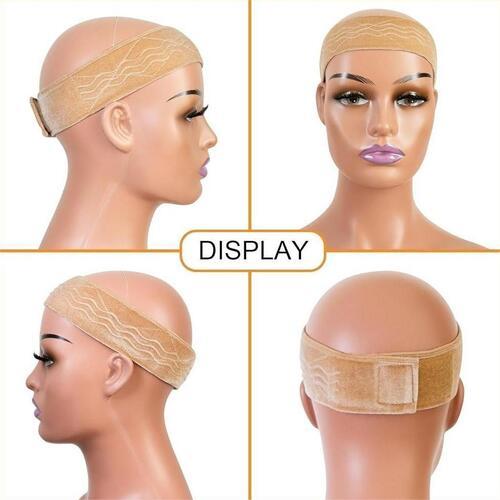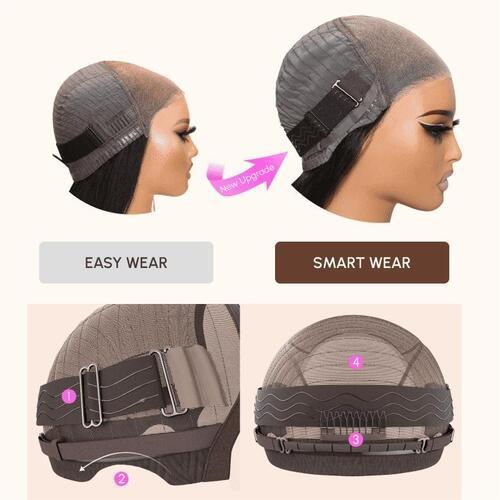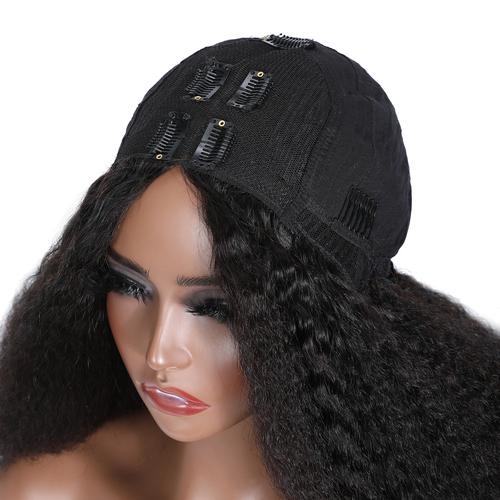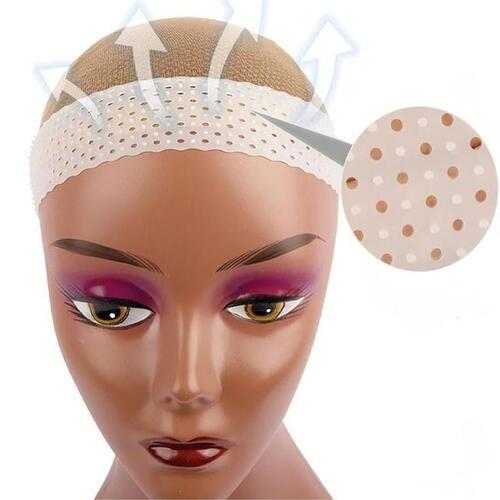Wigs are one of my favorite beauty shortcuts — they let you change length, color, and style without touching your natural hair. But nothing ruins the effect faster than a wig that slips. Below are seven clear, practical methods to match different lifestyles and needs, with expert tips and natural product mentions from UNice.
1. Wig Tape
Wig tape is a double-sided adhesive strip made for attaching a wig to skin or to polyurethane (PU) tabs inside a wig. It’s designed for a strong, low-profile bond.
👉How to use it
Begin by gently cleansing the hairline with an alcohol wipe to remove oils and residue. This helps the tape adhere better.
Apply pre-cut strips to the wig’s PU ear‑tabs or to the underside of the lace, peel the backing, then press the wig into place, smoothing from the center toward the temples so the lace lays flat.
Pros:
- Highly secure for long days, travel, and active use
- Low-profile and largely invisible under lace
- Cleans up well with the right remover
Cons:
- Potential for skin sensitivity — patch-test first
For a neater, easier-to-remove setup, consider UNice’s Pre‑Everything wigs, which include PU ear‑tabs designed for tape—pressing tape onto those tabs often creates a cleaner seal and speeds up both application and removal. If you have questions about the ear‑tabs, check our FAQ blog for details.
2. Liquid Adhesive (Wig Glue)

Image: Wig by UNice
Specially formulated glue bonds lace to skin for one of the flattest, most long-lasting hairlines.
👉How to use it
Start with a clean hairline. Apply a thin, even layer of glue along the hairline in a well-ventilated space.
Wait until it turns tacky, then lay the lace into place, pressing lightly from the center outward.
Remove with the recommended adhesive remover.
Pros:
- Strongest hold for multiple days
- Ultra-flat finish for a natural look
Cons:
- Requires careful handling and removal
- Possible irritation for sensitive skin
3. Velvet Wig Grip

Image source: Pinterest
A velvet wig grip is a soft band worn under the wig that creates friction to prevent slipping.
👉How to use it
Place the band just behind your hairline, making sure it’s smooth and flat.
Adjust for comfort, then slide the wig on over the grip, checking for even placement.
Pros:
- Gentle on edges, no adhesive needed
- Quick to put on and reusable
Cons:
- Less secure in strong winds
4. Elastic Band & Drawstring Wigs

Image: Wig by UNice
Many wigs now come with an elastic band sewn inside the cap for a snug, customized fit. Drawstring wigs are also popular — they combine elastic with an adjustable cord for even more security.
👉How to use it
Sew or clip an elastic band inside the wig cap, adjusting the length for comfort.
For drawstring wigs like those from UNice, put the wig on and gently pull the cord until it feels secure, then tuck the string away. This combo holds up well even during workouts.
Pros:
- Comfortable, discreet hold
- Great for active use without adhesives
Cons:
- Needs proper adjustment for comfort
5. Sewn-in Clips, Combs & Bobby Pins

Image: Wig by UNice
Small clips or combs sewn into the cap anchor to your natural hair; bobby pins add extra hold.
👉How to use it
Clip into braids, twists, or a wig cap at the temples and nape.
You can sew extra clips or combs into your wig for a fully customized fit.
Pros:
- Reusable and adjustable
- Allows quick on-and-off changes
Cons:
- Requires hair or a base to grip
6. Silicone Strip or Band

Image source: Pinterest
Silicone grips inside the cap or in a separate band keep the wig in place without glue.
👉How to use it
Sew silicone strips into your wig cap or wear a silicone-lined band under the wig.
Pros:
- Strong hold without adhesive
- Gentle on skin and hair
Cons:
- Can feel warm in hot weather
7. Wig Cap + Proper Base
A smooth, secure base plus a wig cap improves fit and protects natural hair.
👉How to use it
Braid or twist hair flat, or wrap in silk to reduce friction.
Pull on a thin wig cap, smoothing out lumps before installing your wig. Here are 8 common sew-in braid patterns that may inspire you.
Pros:
- Protects natural hair and improves fit
- Helps wigs sit smoothly
Cons:
- Prep takes extra time
Final Thoughts
No single method works for everyone, so it’s worth experimenting until you find your perfect match. Whether you love the security of wig tape, the comfort of an elastic band, or the convenience of sewn-in clips, UNice offers wig styles and features that make each method easier and more effective. The right fit not only keeps your wig in place — it also boosts your confidence so you can enjoy every style without worry.











